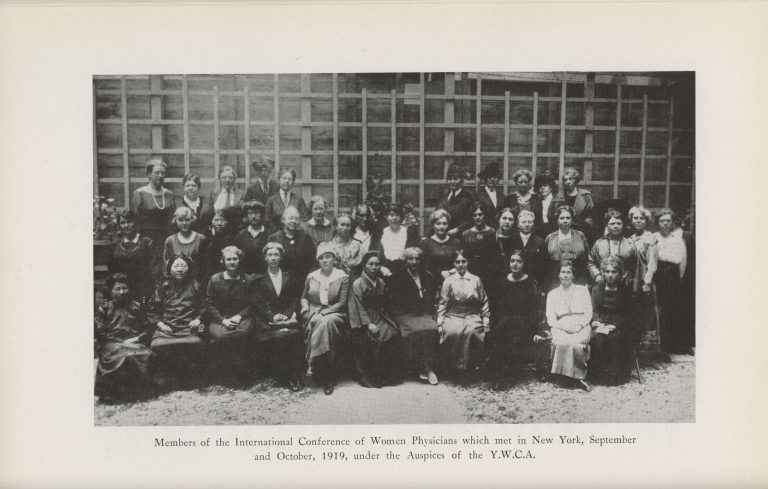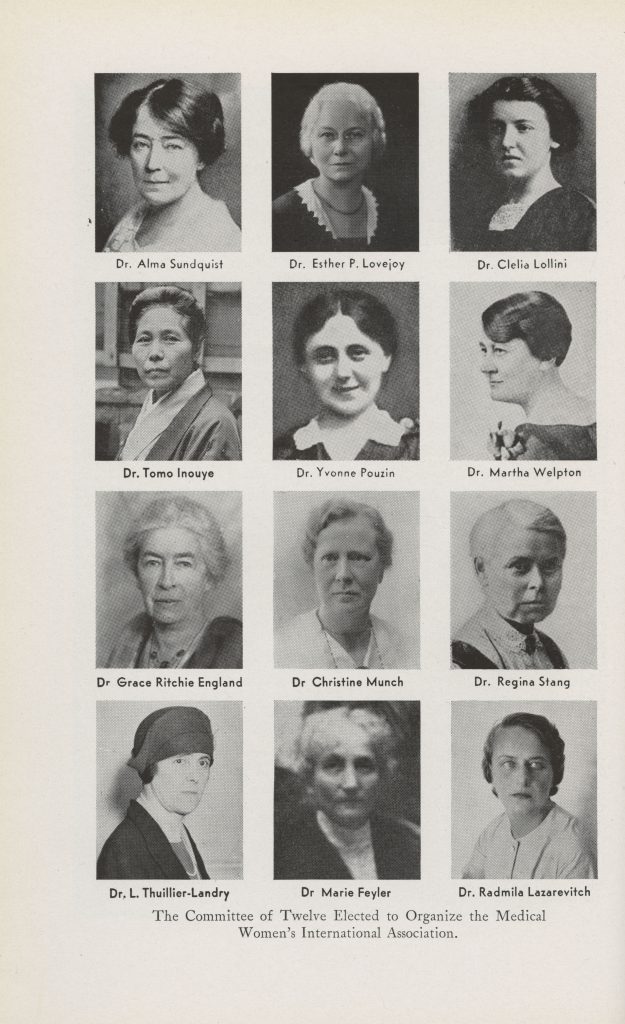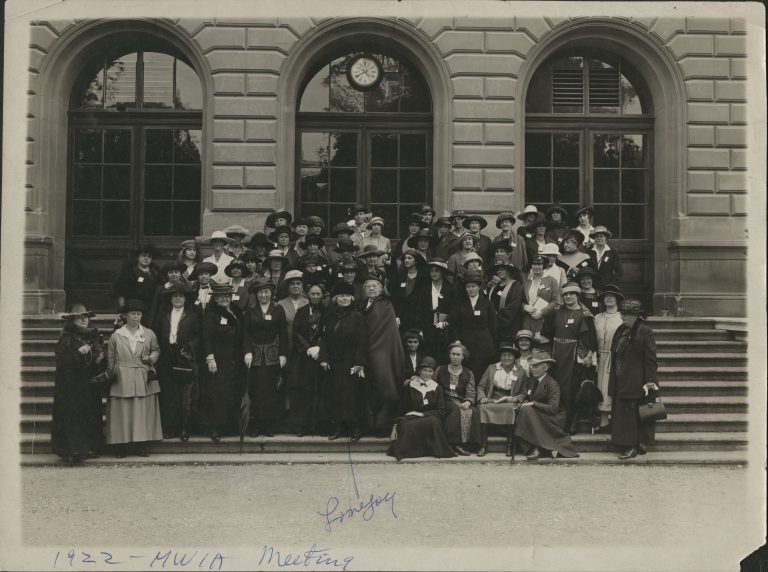We Are Not Coexisting but Existing Together: 100 Years of Medical Women's International Association
by Kyah Hawkins, Archives Assistant
Before MWIA
This year marks the centennial anniversary of the Medical Women’s International Association (MWIA). The organization was started for women doctors all over the world to have the opportunity to discuss medical issues that affected them and their international counterparts and hopefully find a medical solution to right the problems. MWIA was the first organization that united medical women internationally. In fact, at the time there only existed two national women physician societies, American Medical Women’s Association and Medical Women’s Federation, Great Britain. Both were still in their early stages as well, 1915 and 1917, respectively.

After the Great War ended and everyone tried to return to their normal lives, it was brought to the attention of women physicians that their countries had problems that could be solved by uniting forces and trading ideas. The International Conference of Women Physicians was held in New York City by the Social Morality Committee of the War Council that was under the Young Women's Christian Association (YMCA). The American Woman’s Medical Association (AMWA) saw this as a perfect opportunity to host a dinner honoring all the women who worked in France in the War Zone, at the Waldorf-Astoria Hotel in the city to celebrate accomplishments during the war. So, on October 21, 1919, Dr. Esther Pohl Lovejoy acted as toastmistress to women of sixteen different nationalities, while Dr. Martha Welpton wrote notes that would be the official start of MWIA.
As the many women physicians talked and listened to each other throughout the night about the various topics that ailed their countries and the idea that there should be constant communication to bring this unique community together, blossomed. As the doctors gave their speeches about the state of health in their nations, Dr. Kristin Munch of Norway was the first to express the need for an international organization of women doctors to begin work for the better of mankind.
Actions Not Words: Building MWIA
By the end of the night it was decided that Dr. Lovejoy was to be temporary chairman and Dr. Welpton, acting secretary. Lovejoy originally chose a committee of international doctors to hold the power of creating the constitution and appointing the Executive committee. But as the women met again on October 24th, many of the foreign doctors objected to the appointment of such an important committee by a temporary chairperson. Therefore, the women held a secret ballot to appoint the new Committee of Twelve. The new ballot added one more member than Lovejoy did and only changed two people. One could wonder why this was maybe the doctors did not agree or like one of the people chosen to be on the committee or they truly wanted the organization to be democratic. By holding a vote, everyone's opinion was heard.

On October 25, 1919, for the first time the Medical Women’s International Association met to construct a constitution for the first ever international medical association and appoint the officers, executive board and country representatives. Welpton is credited as the one who chose of the name, Medical Women’s International Association. Lovejoy was named president, Christine Murrel, England, first vice president L. Thuillier-Landry, France, second vice president, Munch, third vice president, Marie Feyler, Switzerland, recording secretary, Welpton, corresponding secretary and Ellen Potter, USA, treasurer.
The Constitution
The preamble to their newly formed constitution (that later will be revised at the 1922 Geneva Congress) read: “best conserve the high ideals actuating women physicians in their efforts to help raise the standard of life in different parts of the world...”. The idea of women physicians coming together to solve these issues was so significant because no other international medical organization existed that pertained to the unique view of women physicians. The organization allowed the women to strengthen their right to practice medicine because they discussed issues that they cared about such as the health problems with prostitution, the white slave trade (human trafficking) and home hygiene.
The women meeting in 1919 wanted MWIA to be for every women physician no matter how long they had been practicing medicine. MWIA’s purpose was to keep a strong bond between women doctors across the world and hopefully develop lasting friendships in their professional and personal lives. In Article III of MWIA’s constitution, it is written that there will be no talk of “political, religious or countervails topics that effect the inter-relationships of two or more countries.” They wanted a truly international organization that did not ostracize medical women during anytime. Everyone was welcomed and encouraged to join. MWIA made it clear that they are not bound by any government and the only laws that should affect the inner workings of the organization was those placed in their constitution. This is important when conflicts that started World War II arose, especially from Germany and Italy. In fact, the governments of each country dissolved their national societies of women physicians but MWIA still allowed for individual members to join.
MWIA survived for 100 years because of the strong dedication of women doctors who saw problems everywhere that they wanted to solve. Instead of just sitting back and relaxing after many of these women healed those affected by a terrible war, MWIA members sprang into action. The women believed that, “More and more are we coming to a realization that no people and no nation can stand alone. We cannot afford to occupy an isolated position...” The only way anything could change was to leave nationalism behind, stopping wars and to realize that we are not coexisting but existing together.

Members of the Medical Women's International Association attending the 1922 Geneva Conference, the first after the inception of the association. 80 medical women from 12 different countries were in attendance at the meeting.